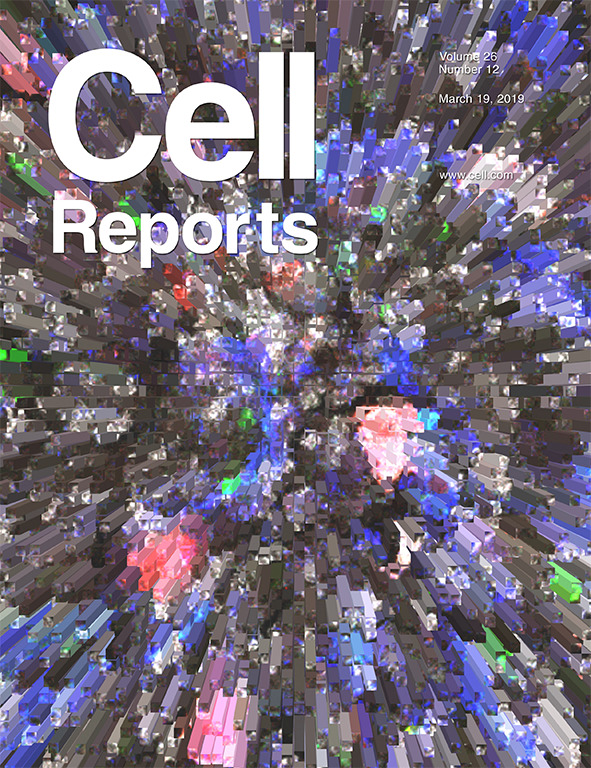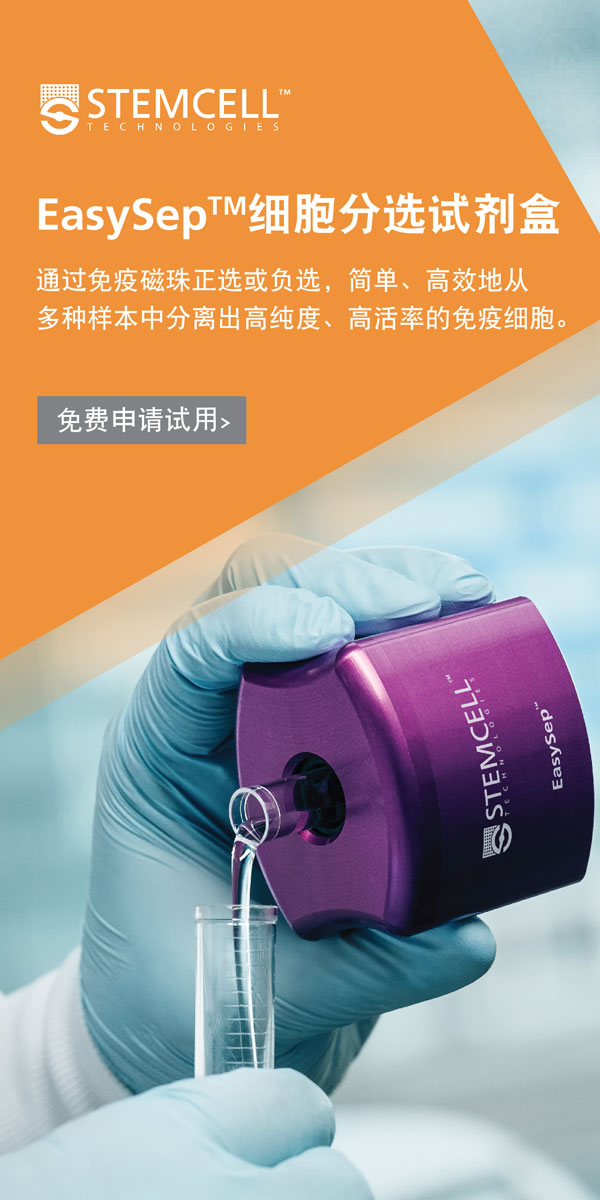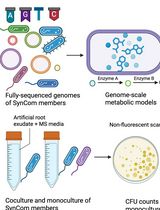- EN - English
- CN - 中文
Propagation and Purification of Chlamydia trachomatis Serovar L2 Transformants and Mutants
沙眼衣原体血清型L2转化子和突变体的繁殖及纯化
发布: 2019年12月20日第9卷第24期 DOI: 10.21769/BioProtoc.3459 浏览次数: 4440
评审: Alka MehraLionel SchiavolinAnonymous reviewer(s)

相关实验方案
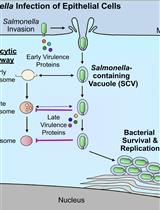
细菌病原体介导的宿主向溶酶体运输的抑制:基于荧光显微镜的DQ-Red BSA分析
Mădălina Mocăniță [...] Vanessa M. D'Costa
2024年03月05日 2815 阅读
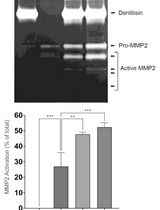
通过制备连续聚丙烯酰胺凝胶电泳和凝胶酶谱分析法纯化来自梭状龋齿螺旋体的天然Dentilisin复合物及其功能分析
Pachiyappan Kamarajan [...] Yvonne L. Kapila
2024年04月05日 1987 阅读
Abstract
Chlamydia trachomatis (C.t.) is an obligate intracellular pathogen that cannot be cultured axenically and must be propagated within eukaryotic host cells. There are at least 15 distinct chlamydial serovariants that belong to 2 major biovars commonly referred to as trachoma and lymphogranuloma venereum (LGV). The invasive chlamydia LGV serovar L2 is the most widely used experimental model for studying C.t. biology and infection and is the only strain with reliable genetic tools available. New techniques to genetically manipulate C.t. L2 have provided opportunities to make mutants using TargeTron and allelic exchange as well as strains overexpressing epitope-tagged proteins, in turn necessitating the regular purification of transformant and mutant clones. Purification of C.t. is a labor-intensive exercise and one of the most common reagents classically used in the purification process, Renografin, is no longer commercially available. A similar formulation of diatrizoate meglumine called Gastrografin is readily available and we as well as others have had great success using this in place of Renografin for chlamydial purifications. Here, we provide a detailed general protocol for infection, propagation, purification, and titering of Chlamydia trachomatis serovar L2 with additional notes specifically pertaining to mutants or recombinant DNA carrying clones.
Keywords: Chlamydia (衣原体)Background
Chlamydia trachomatis (C.t.) is the etiological agent of blinding trachoma and the most prevalent sexually transmitted disease in the world. Chlamydiae are gram-negative obligate intracellular bacteria that have evolved to occupy a niche within the host cytoplasm derived from a modified endocytic vesical called an inclusion. Chlamydia initiates entry into the host cell by binding to the sialic acid moieties of proteins on the host cell surface. The precise mechanisms regulating entry of C.t. into the host cell are poorly understood but several studies have implicated clathrin mediated endocytosis (Hodinka et al., 1988; Wyrick et al., 1989; Majeed and Kihlstrom, 1991), while others have suggested caveola mediated entry is involved (Boleti et al., 1999). C.t. is taken up into the cell within an endocytic vesicle which it heavily modified to form the chlamydial inclusion. Fusion of this compartment with lysosomes is blocked and the bacterium secretes numerous effector proteins that subvert host resources and redirect them to the inclusion to promote chlamydial proliferation. The Chlamydial lifecycle is biphasic, consisting of different infectious and proliferative stages. The infectious but metabolically inactive form is referred to as an elementary body (EB) while the metabolically active but non-infectious form is called the reticulate body (RB) (Figure 1). Chlamydial EB’s bind to sialic acid residues on cell surface receptors and through an unknown mechanism induce their uptake by the cell into an endocytic vesicle. The inclusion avoids fusion with lysosomes and degradative compartments while trafficking along microtubules to the peri Golgi region. By about 4 h post-infection, most of the EBs have converted to RBs. Following chlamydial cell division, the RB’s undergo asynchronous conversion to EB’s. Depending on stress, cellular environment, and nutrient availability the chlamydial replicative cycle takes 48-72 h to complete and chlamydia exits via host cell lysis or through extrusion. Of note, the EB is the form usually purified (Caldwell et al., 1981) although techniques have been described to purify RBs (Skipp et al., 2016). For C.t. purifications, the EB is most desirable, since it is the stage associated with infectivity.
Figure 1. Transmission electron micrograph of wild-type C.t. L2 at 36h post-infection. Scale bar is 1 µm.
Although one study reported that a medium had been developed that could support the axenic metabolic and biosynthetic activity from both EBs and RBs, to the best of our knowledge no lab has had success in using this media to support propagation of chlamydia (Omsland et al., 2012). Thus, in the research laboratory, C.t. is typically cultivated in HeLa 229, Hep2, McCoy, or Vero cells although other cell-types can be used they are less common. Until recently, C.t. was largely intractable to genetic manipulation but advances in tools to generate site-specific mutations and to overexpress proteins during infection have revolutionized the field and labs are now making recombinant C.t. clones regularly. In the past, large preparations of C.t. EBs could carry the lab for quite some time. Now, with the generation of new strains occurring on a regular basis, C.t. preparations are a much more common occurrence in the chlamydia laboratory. This is certainly a good thing but cultivating, purifying, and titering new C.t. strains on a regular basis can be a costly and time-consuming endeavor. Not to mention that a key reagent that has been used for years, Renografin, has been made extremely difficult to obtain due to Mallinckrodt ceasing production. Fortunately, a similar product has been identified and new sources discovered (this information will be provided in the materials section).
Materials and Reagents
- Consumables
- Tissue culture flask T175 (Fisher Scientific, catalog number: 07-000-384)
- Basix 5 ml serological pipette (Fisher Scientific, catalog number: 14-955-233)
- Basix 10 ml serological pipette (Fisher Scientific, catalog number: 14-955-234)
- Basix 25 ml serological pipette (Fisher Scientific, catalog number: 14-955-235)
- Basix 50 ml conical tube (Fisher Scientific, catalog number: 14-955-239)
- Beckman 250 ml centrifuge bottle (Fisher Scientific, catalog number: NC9304619)
- Oak Ridge tube (VWR, catalog number: 76324-812)
- Thickwall polycarbonate ultracentrifuge tube (Fisher Scientific, catalog number: NC9439275)
- 18 Gauge Canula (Thomas Scientific, catalog number: 8957G34)
- 10 ml syringe (Fisher Scientific, catalog number: 14-841-54)
- 1.5 ml conical screwcap tube (USA Scientific, catalog number: 1415-8700)
- 24-well plate (Fisher Scientific, catalog number: 07-000-030)
- N-95 mask
- Tissue culture flask T175 (Fisher Scientific, catalog number: 07-000-384)
- Experimental models: cell lines
- HeLa cells ATCC CCL-2
- HeLa cells ATCC CCL-2
- Bacterial strains
- Chlamydia trachomatis serovar L2 ATCC VR-902B
- Chlamydia trachomatis serovar L2 ATCC VR-902B
- Antibodies
- Chlamydia trachomatis LPS antibody, mouse monoclonal Novus NBP1-28820
- Rabbit anti-Mouse IgG (H+L) Cross-Adsorbed Secondary Antibody, Alexa Fluor 488 (Thermo Fisher, catalog number: A-11059)
- Chemicals, peptides, recombinant proteins, and miscellaneous reagents
- Gastrografin (Bracco, catalog number: 0270-0445-40)
- RPMI 1640 medium with L-glutamine (Thermo Fisher, catalog number: 11875-093)
- NaHCO3 (Sodium bicarbonate) (Thermo Fisher, catalog number: 25080094)
- Gentamicin (Thermo Fisher, catalog number: 15710072)
- Trypsin-EDTA 0.5% (Thermo Fisher, catalog number: 15400054)
- Heat-inactivated Fetal Bovine Serum (VWR, catalog number: 89510-186)
- 1x PBS without calcium chloride and magnesium (Thermo Fisher, catalog number: 10010-049)
- 1x HBSS without calcium chloride and magnesium (Thermo Fisher, catalog number: 14170112)
- Cycloheximide (MilliporeSigma, catalog number: C4859-1ML)
- KH2PO4 (Fisher Scientific, catalog number: P285-500)
- K2HPO4 (Fisher Scientific, catalog number: P288-500)
- KCl (Fisher Scientific, catalog number: P217-500)
- NaCl (Fisher Scientific, catalog number: S271-500)
- L-Glutamic Acid (Fisher Scientific, catalog number: A125-100)
- DEAE Dextran (MP Biomedicals, catalog number: ICN19513380)
- Methanol (Fisher Scientific, catalog number: A412-500)
- Sucrose
- Na2HPO4 (Sodium phosphate dibasic anhydrous)
- NaH2PO4·H2O (Sodium phosphate monobasic monohydrate)
- Blood agar plate
- Yeast peptone dextrose (YPD) agar plate
- 10x K36 (see Recipes)
- 1x K36 (see Recipes)
- Sucrose Phosphate Glutamate buffer (SPG) (see Recipes)
- 30% Gastrografin (see Recipes)
- 54% Gastrografin (see Recipes)
- 44% Gastrografin (see Recipes)
- 40% Gastrografin (see Recipes)
- 10x DEAE dextran (see Recipes)
- 1x DEAE dextran (see Recipes)
Equipment
- P200 Pipette
- Shaker
- Humidified CO2 cell culture incubator set to 37 °C
- Floor Centrifuge Avanti JXN-30 (Beckman, catalog number: B38624)
- Rotor: JLA-16.250 (Beckman, catalog number: 363934)
- Rotor: JLA-25.50 (Beckman, catalog number: 363058)
- Rotor: JS-24.15 (Beckman, catalog number: 362396)
- Table top Centrifuge Allegra X-14R (Beckman, catalog number: A99465)
- Microcentrifuge Microfuge20R (Beckman, catalog number: B31599)
- Sonicator Q-sonica Q500 (VWR, catalog number: 89207-036)
- Sonicator Probe CL-334 (VWR, catalog number: 89207-036)
- Fluorescent microscope
- Biosafety cabinet
- -80 °C freezer
- Large cell scraper (Fisher Scientific, catalog number: 08-100-241)
Procedure
文章信息
版权信息
© 2019 The Authors; exclusive licensee Bio-protocol LLC.
如何引用
Faris, R. and Weber, M. M. (2019). Propagation and Purification of Chlamydia trachomatis Serovar L2 Transformants and Mutants. Bio-protocol 9(24): e3459. DOI: 10.21769/BioProtoc.3459.
分类
免疫学 > 免疫细胞功能 > 巨噬细胞
微生物学 > 微生物-宿主相互作用 > 细菌
您对这篇实验方法有问题吗?
在此处发布您的问题,我们将邀请本文作者来回答。同时,我们会将您的问题发布到Bio-protocol Exchange,以便寻求社区成员的帮助。
Share
Bluesky
X
Copy link


